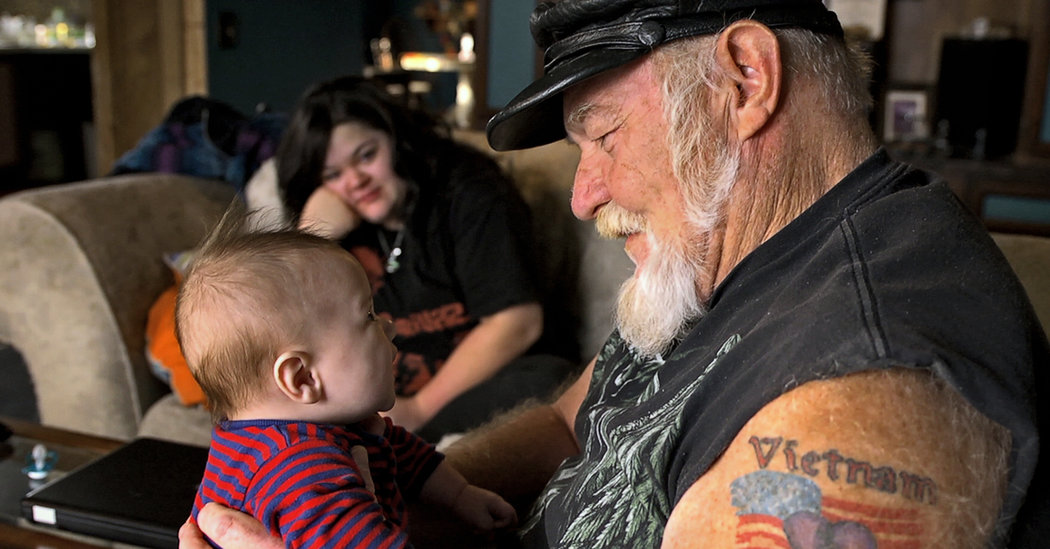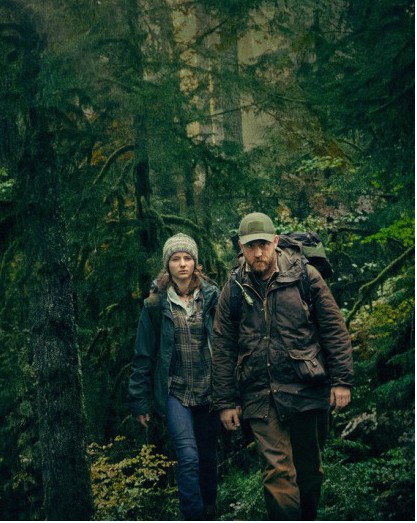
Photo: Josh Telles
Debra Granik is a filmmaker whose Oscar-nominated breakout film—2010’s Winter’s Bone—cemented her place as a creative powerhouse of independent cinema and also launched the career of one of the biggest movie stars in the world, Jennifer Lawrence. Her recognition in the industry only deepened with her next two films, the 2014 documentary Stray Dog (2014) and Leave No Trace (2018).
All three films by Granik are lyrical, meditative, and emotionally resonant pieces anchored by an unmatched grit and unflinching realism. For any aspiring filmmaker, Granik’s three works give unparalleled insight into the process of creating impactful, complex, and layered character-study dramas that occupy your mind long after you’ve seen them.
Probably Granik’s most well-known film, Winter’s Bone follows an Ozark Mountain teenager, Ree Dolly, as she is forced to navigate the seedy underbelly of her rural community in search of her drug-dealer father who has put their family home up as bond collateral and then mysteriously vanished. With her family facing eviction, Ree is forced to take matters into her own hands, plunging her headfirst into a coming-of-age tale tinged with darkness, intrigue, and more than one brush with death.
Like everything else in Granik’s repertoire, Winter’s Bone is a thoughtfully constructed character portrait of an underrepresented section of society. Unlike both Stray Dog and Leave No Trace, however, Winter’s Bone is the only film by Granik that has a foot in two genres—drama and thriller/mystery—and executes that high-wire act with flawless precision.

Jennifer Lawrence in “Winter’s Bone”
The concept of a film playing within the sandboxes of two different genres is one many directors attempt, but very few actually pull off. Simply put, it is very difficult for a movie to fire on all cylinders in one genre while also operating at full capacity in another. Usually, one genre will end up taking over the other, or both are so watered-down that they cancel each other out. So, the fact that Winter’s Bone does both so effortlessly is not only indicative of Granik’s massive talents, but also allows the movie to serve as a case study for filmmakers looking to similarly straddle the genre fence in their own works.
So, how did Granik do it? While you could spend a long time dissecting each and every way Winter’s Bone accomplishes this, for our purposes, we’ll focus on one: point-of-view.
A chief reason that Winter’s Bone is so successful in operating in two genres is that the trappings of each genre is dictated by the very specific POV of Ree. Specifically, for drama, Ree’s day-to-day struggle of playing sole caretaker to her ill mother and younger brother and sister, and for mystery/thriller, Ree untangling the web of criminality that her father had gotten himself wrapped up in. Both are driven by Ree’s one singular desire: to find her father. By rooting the drama and mystery/thriller storylines in the same practical, “easy-to-identify” cause, Granik was able to masterfully meld the two genres into one cohesive narrative.
For instance, on the drama side, there’s a wonderfully simple yet powerful scene where Ree teaches her younger brother and sister how to hunt and skin/cook an animal. The subtext of Ree doing this is that she’s not sure if she’ll survive the search for her father, and is thus imparting every single possible survival skill she can before she potentially meets her demise. This adds not only a bevy of emotional nuance and familial drama to the piece, but also adds enormous weight to Ree’s future interactions with them—every one could potentially be her last.
For the mystery/thriller element, probably the most visual and stark example of effectively playing to that genre comes toward the end of the film, when the Milton women take Ree to the location of her father’s corpse. By bringing her father’s murdered body (or even just some of it) to the authorities, Ree will be able to release the bond held over her family’s head and save them from eviction. So how does Ree achieve this? She literally pulls her father out of the water so the Milton women can chainsaw-off his hands for her to take to the county Sheriff. This vivid, very “genre-y” visualization of Ree doing this only works because it is so grounded in Ree’s inner character life—her desperate desire to find her father and save her family, at any cost. If Granik hadn’t framed this scene in the context of the very specific scope of Ree’s (quite literally) do-or-die cause, it could have come across as exploitative and cheap. Instead, it is arguably the most memorable, affecting scene in the entire film.
Winter’s Bone is a film that stands the test of time—a deftly executed work of art that will undoubtedly (and deservedly so) be admired for years to come.
The lone documentary in Granik’s filmography as a director, Stray Dog follows Ron “Stray Dog” Hall, a Vietnam War veteran, a Missouri trailer park manager, and biker. As we join Ron on his annual pilgrimage (joined by his Mexican immigrant wife Alicia) to the Vietnam Memorial in Washington DC to participate in a series of veteran ceremonies, we are treated to a beautifully tender character sketch that reveals there is much more to him than initially meets the eye.
While different in medium than Granik’s other works, Stray Dog is just as thought-provoking, intimate, and moving as her narrative feature films. It also similarly touts valuable lessons for filmmakers of all skill levels as to how to create a fully-formed, magnificently restrained yet complex painting of an “outsider,” someone considered to be on the fringes of everyday society. Mainly, these lessons of Stray Dog are in its unconventional structure/format and its wholly compassionate, non-judgmental treatment of Ron.

Ron “Stray Dog” Hall
With regards to its structure/format, Stray Dog is truly in a league of its own. Unlike a vast majority of its documentary film counterparts, it does not feature interviews, voiceovers, or any of the other “classic” documentary staples we are used to seeing. Instead, it opts to dive straight in, placing us directly into Ron’s day-to-day life without any setup or prior context—as a narrative feature film would. By choosing this observational method for Stray Dog, Granik does two things. One, she immediately puts you “face-to-face” with the ins-and-outs of who Ron is as a human. Seeing how he interacts with those around him, makes decisions, and handles his Vietnam War related PTSD—-and doing so from the jump—makes Ron all the more empathetic. Granik makes him feel like a friend of yours, someone that you know, instead of simply a subject you’re viewing on a screen. Secondly, along similar lines, her approach makes you forget you’re watching a documentary. Moreover, by not trying to put an overly distinctive “authorial” visual signature on it, and instead just letting the content and people speak for themselves, Stray Dog is far more effective. Simple, clean, and efficient storytelling is, most of the time, the best way to go, and Stray Dog is a prime example.
The other major lesson—and probably the most important—that filmmakers, storytellers at large, and people in general should take away from Stray Dog is to never pre-judge your characters. If Granik were to take Ron at face value—as often probably a lot of people do—there would be some potentially off-putting red flags. He’s a biker. He curses like a sailor and smokes like a chimney. He owns a lot of guns. But by looking past these surface-level characteristics, and getting to the core of his humanity, we are gifted to a wonderful, emotionally evolved human being. He’s teaching himself Spanish so he can better communicate with his Mexican wife and her two teenage children. He’s actively involved with military veteran outreach, doing everything he can to get his fellow veterans the help they need to get back on their feet. He sees a therapist to help him sort through his various traumas. He’s not afraid to cry. He owns and utterly dotes on a pack of small dogs. He personally ensures, along with an immigration lawyer, that Alicia’s children are able to legally move to the United States. By portraying Ron in his entirety, Granik has given a gift to the world, and showed us the inherent goodness of a man who could have easily been written off as something he’s not. Here, Granik yet again displays her unparalleled gift for storytelling utterly grounded in humanity, and given us a truly outstanding piece of cinema.
Leave No Trace, meanwhile, is a melancholic, raw, and powerful film that chronicles a PTSD-afflicted Iraq War veteran father (Will) and his young teenager daughter (Tom) as they live an illegal, off-the-grid existence in a Pacific Northwest national park. When Will and Tom are caught by park rangers and forced to assimilate into conventional society, the strength of their relationship is put to the test, and inevitably causes them to drift apart.
The themes Leave No Trace examines—the treatment of combat veterans, bureaucracy in federal government, and what it means to be normal—are wide-ranging and emotionally complex. The film poses societal, political, and economical questions that require intelligent reflection and rigorous discourse. So, in that sense, Leave No Trace is not an “easy” film. And yet, despite the adult, inherently challenging nature of it, it has a perfect 100% score on Rotten Tomatoes (as of this article, anyway).
So, what gives? How did Granik manage to achieve literal unanimous acclaim on a piece that easily could have been very divisive?
Put simply: she buckled down on two key filmmaking fundamentals—character development and a strong sense of place—and ensured they were pitch-perfect.

Thomasin McKenzie and Ben Foster in “Leave No Trace”
In a film like Leave No Trace that lives and dies on a central relationship, it is absolutely essential that the characters are as fully-fleshed out and unique as possible, and that the actors’ performances are coaxed and massaged to reach every nuance possible. With Leave No Trace, Granik totally knocks both aspects out of the park.
With regards to Will, we’ve seen the PTSD-stricken vet trope a million times in film and television. Granik side-steps the potential cliche pitfall of this, however, by having Will’s coping mechanism with his inner demons be something we’ve never seen on film before—adopting a survivalist, totally bare-bones lifestyle, and being proficient enough at it to be able to carve out a seemingly happy life with a young daughter. By utilizing this tactic in Will’s character, Granik immediately makes him dimensional, empathetic, and, most importantly, human.
For the character of Tom, Granik provides a fresh spin on the fish-out-of-water axiom. In the opening minutes of the film, we learn that Tom is extremely comfortable and skilled in living in this woodland existence with her father. So when she is torn out of that life and forced to live in a “common” one, we experience everything we take for granted—traditional shelter, phones, etc.—first hand and with fresh eyes. Through this innovative structuring of Tom’s character, we as the audience are, in essence, growing with her. Furthermore, by inextricably “looping us in” to her journey, we feel immediately attached to Tom and want to learn more about her any way we can.
Having said all this, Will and Tom would not be nearly as well-rounded as they are without first-rate performances. And Ben Foster and Thomasin McKenzie, respectively, absolutely deliver the goods. It’s obvious that Granik directed them to be as subtle as possible. In every single interaction Will and Tom have, there is a noticeable lack of extensive dialogue. Almost everything that needs to be said is communicated through their facial tics, expressions, and periods of somber, reflective silence. By opting to go for this approach instead of the more traditional Hollywood style of acting, Leave No Trace has a lasting, effective resonance.
Finally, something should be said of its strong sense of place. Meaning to say, the predominant setting, the woods, plays a pivotal enough role in the film that it becomes a character of its own. While Granik flirted with this in Winter’s Bone with the Ozarks, it’s in Leave No Trace that she fully embraces it. While the woods have played an influential role in filmmakers’ work before (David Lynch immediately comes to mind, for example) Granik plumbs it for all its narrative heft and worth. By showcasing the setting so heavily, she adds a tonal quality that would be difficult to achieve otherwise—majestic, slightly ethereal, yet somber feel that seeps its way into the movie as a whole and gives it that hard-to-quantify “special something.”
Taking all this into account, Leave No Trace is a hallmark of what makes Granik a top-shelf storyteller—and yet another example of why she should be celebrated as a titan of modern filmmaking.
